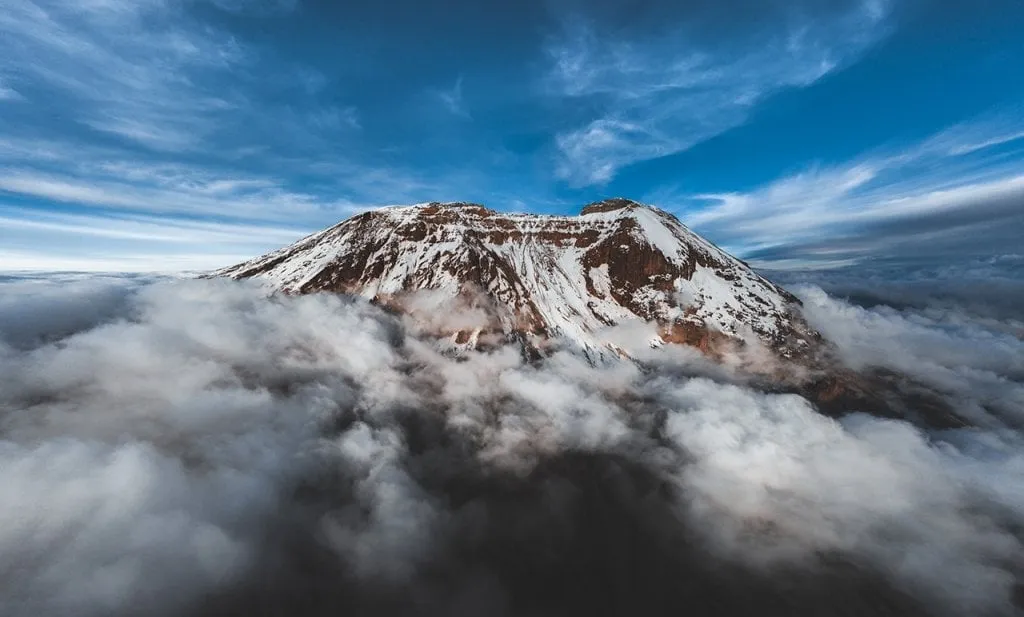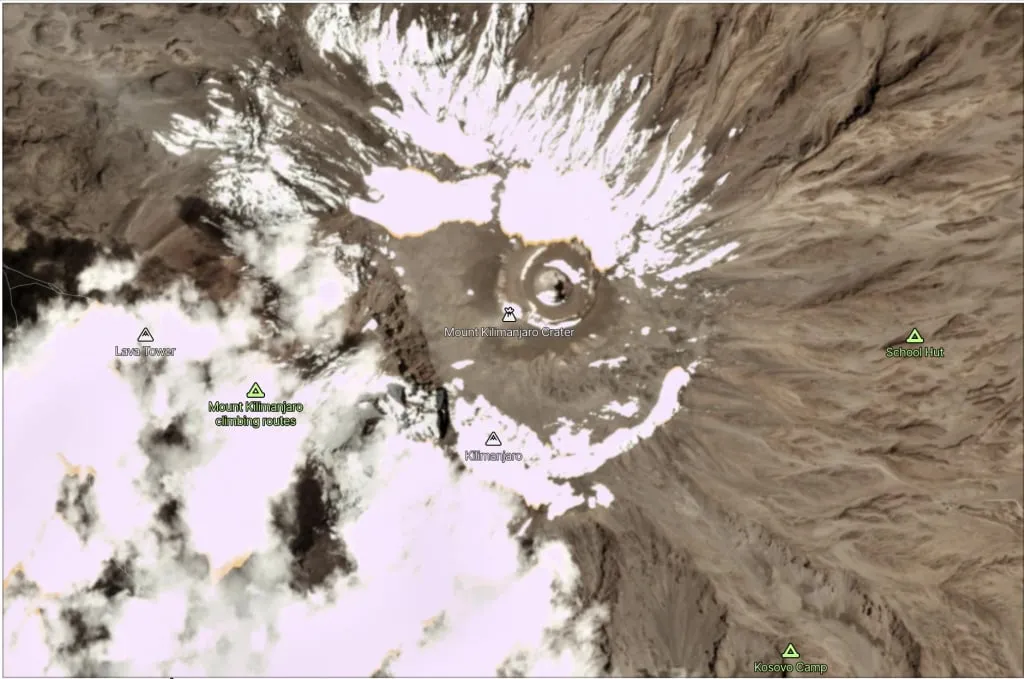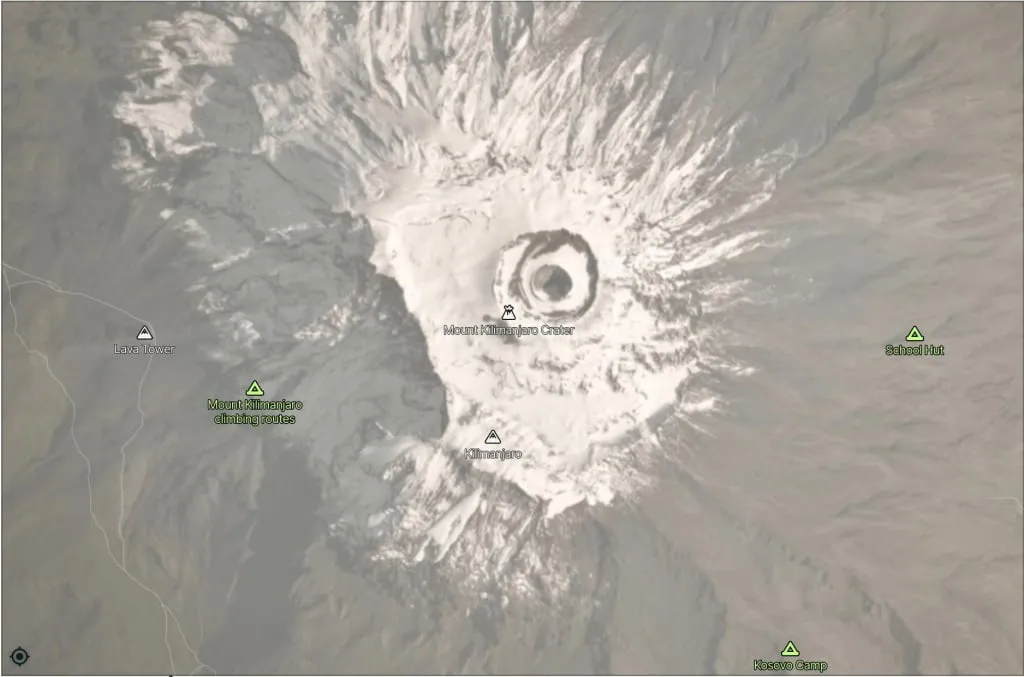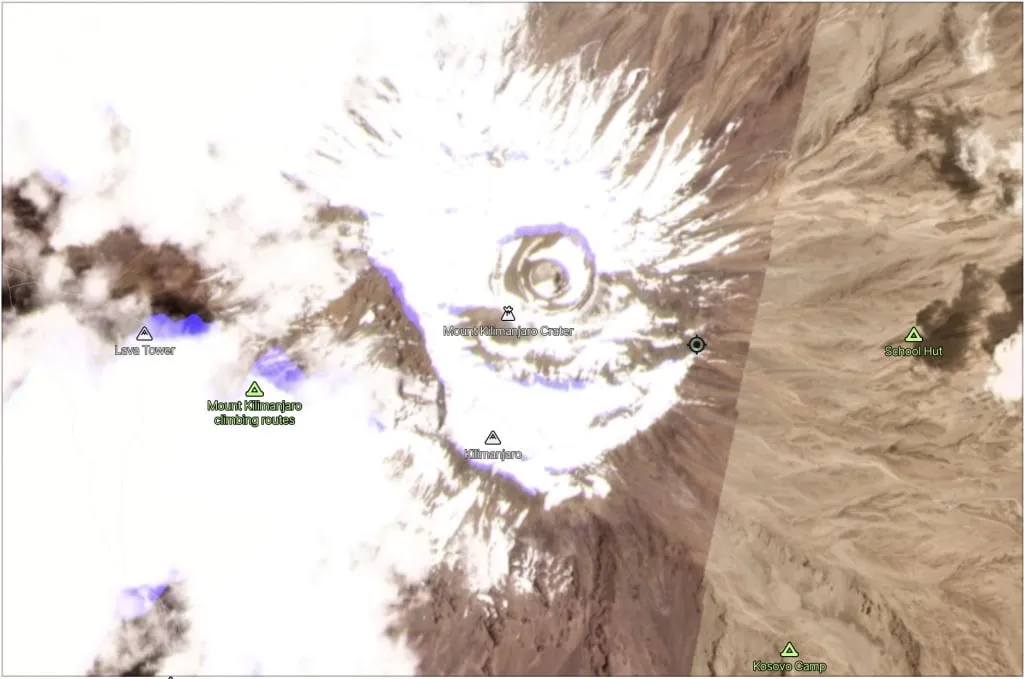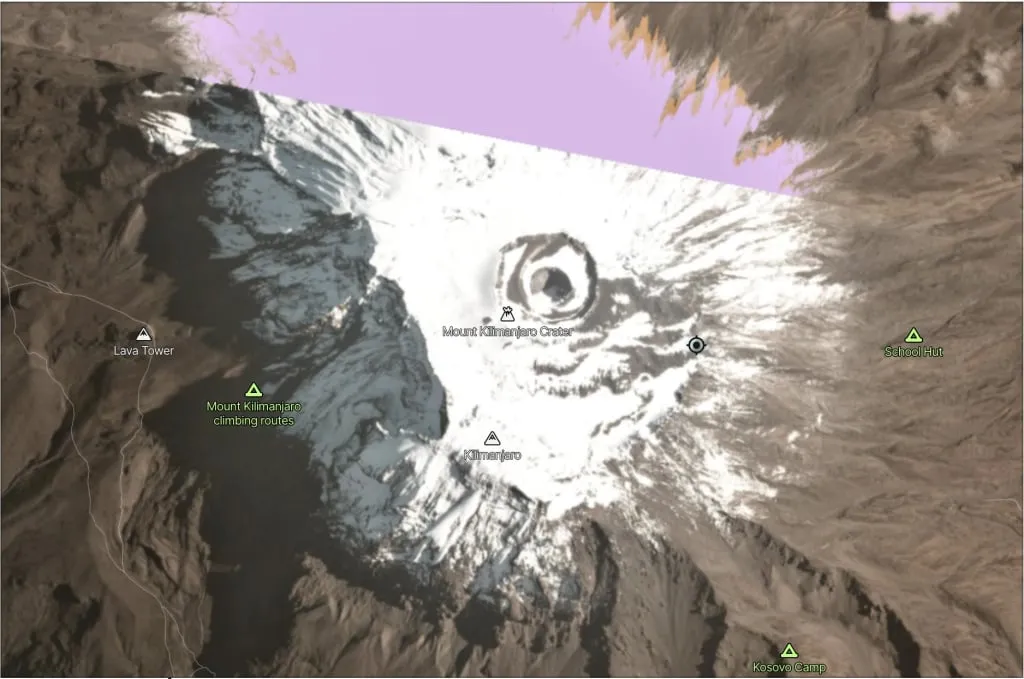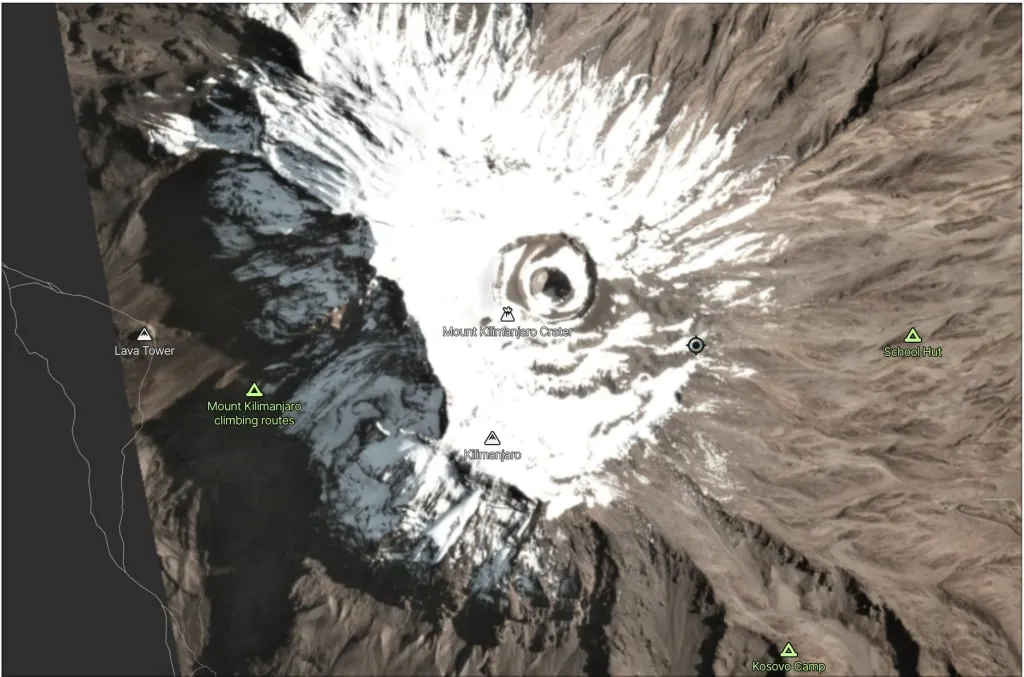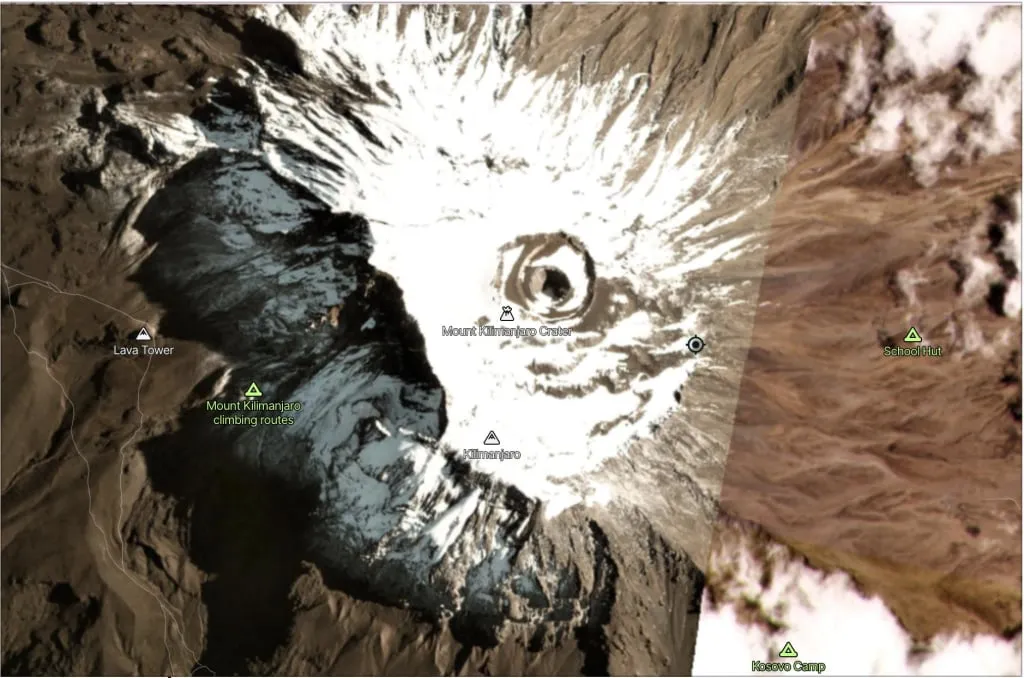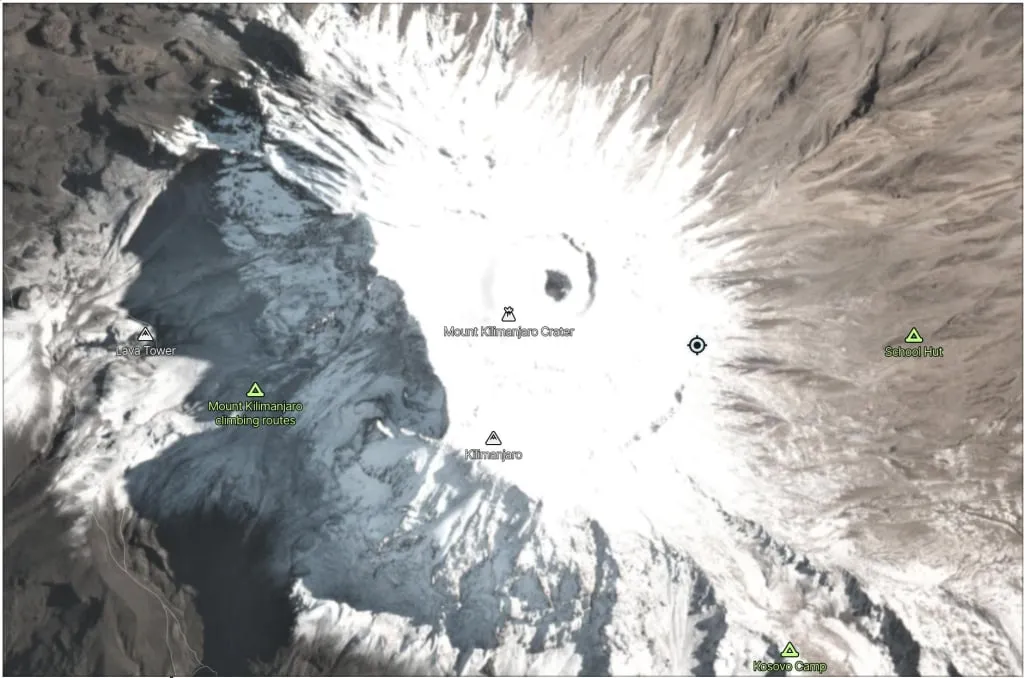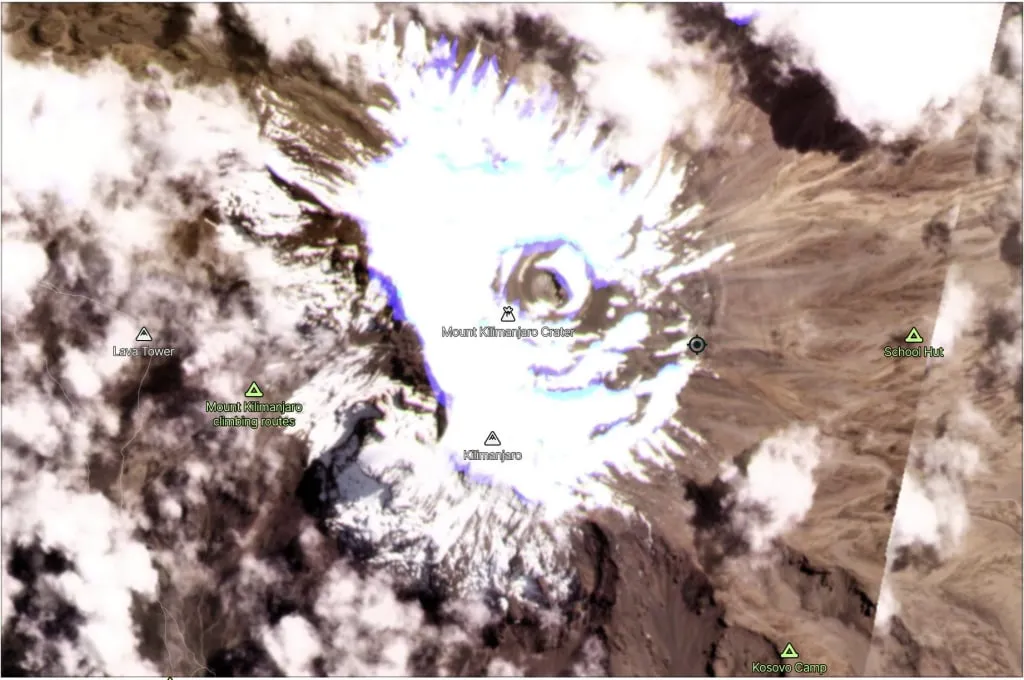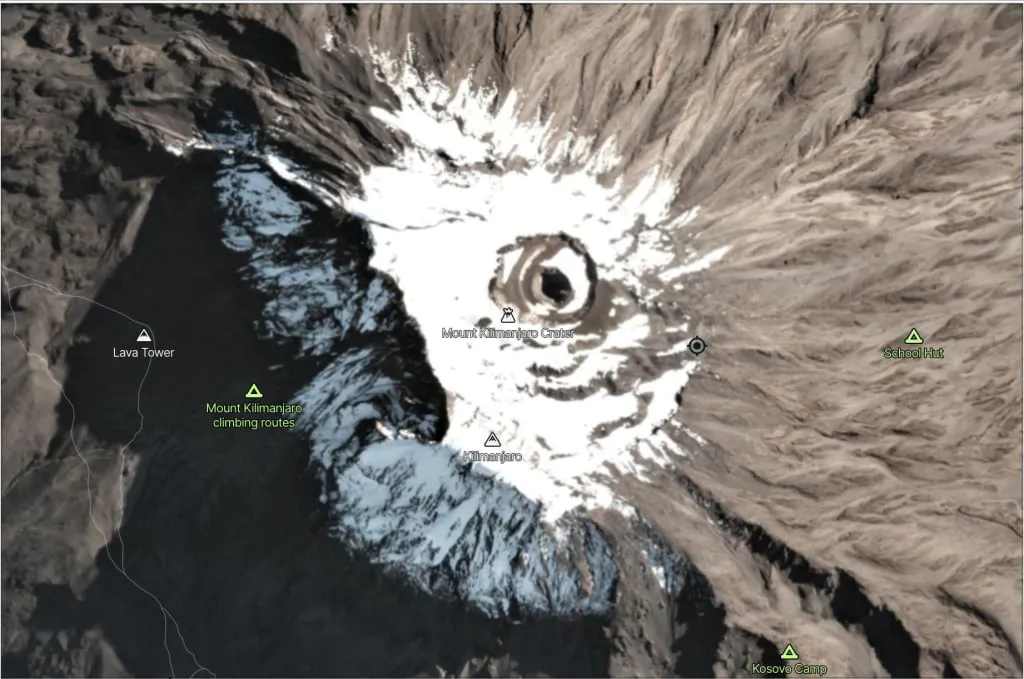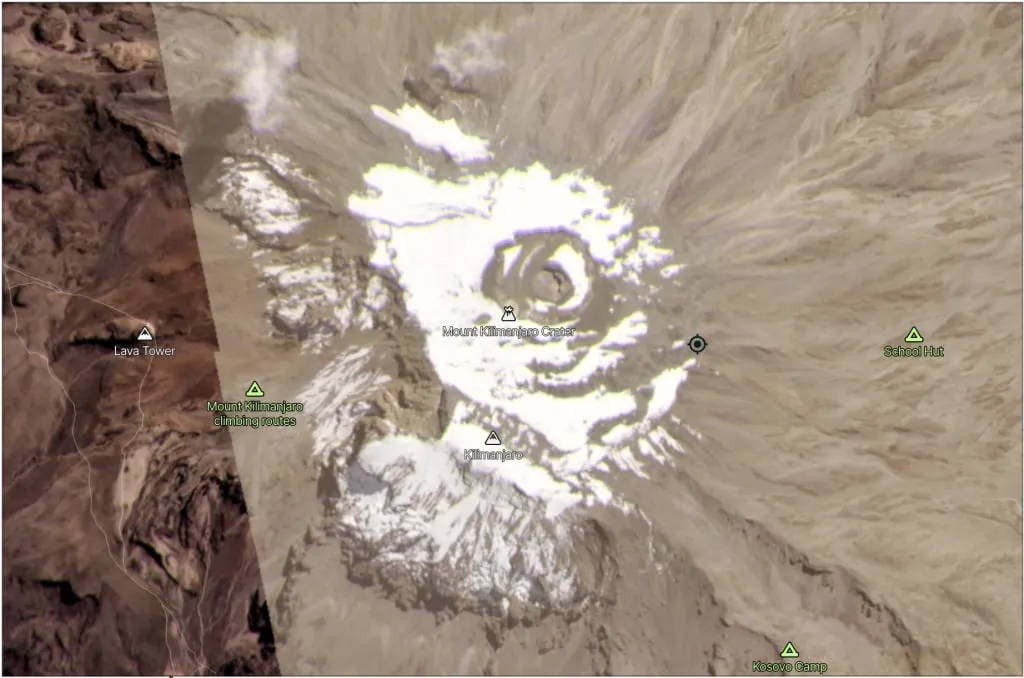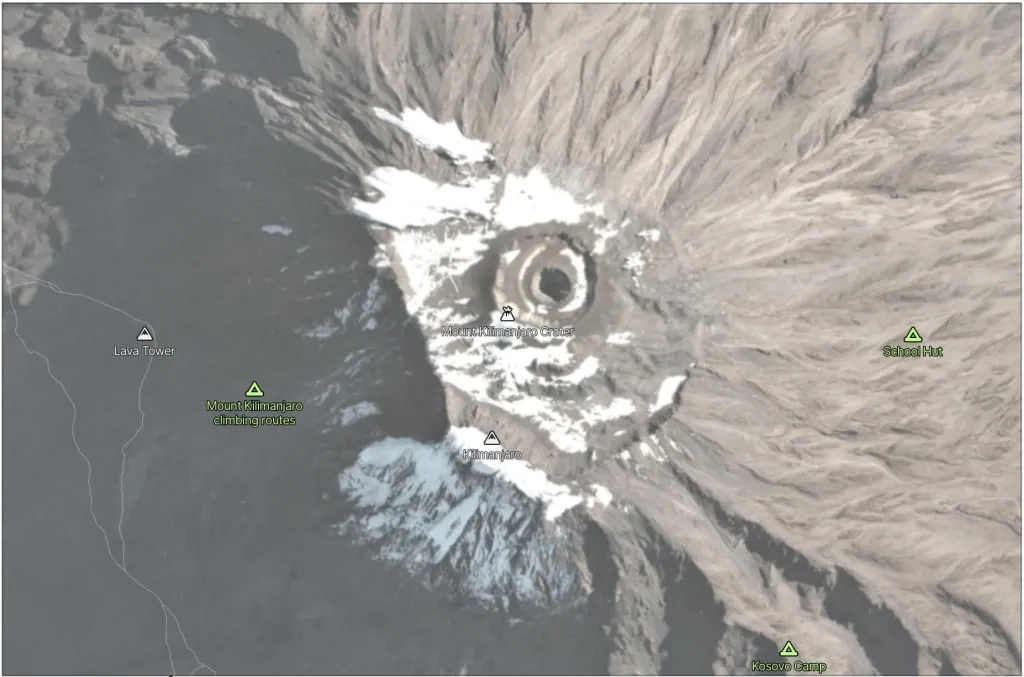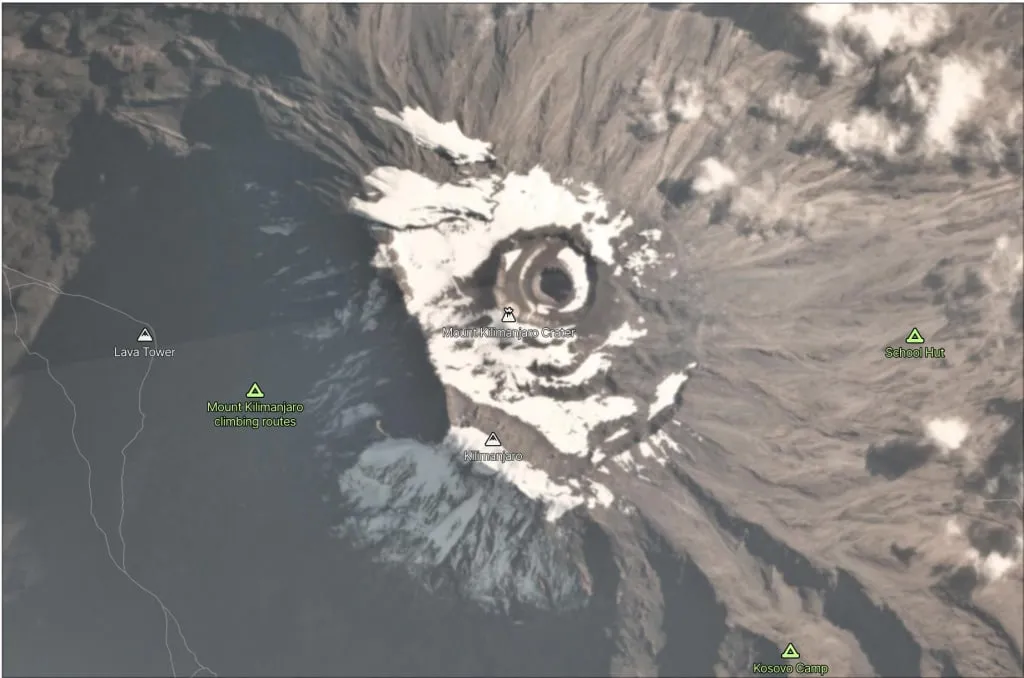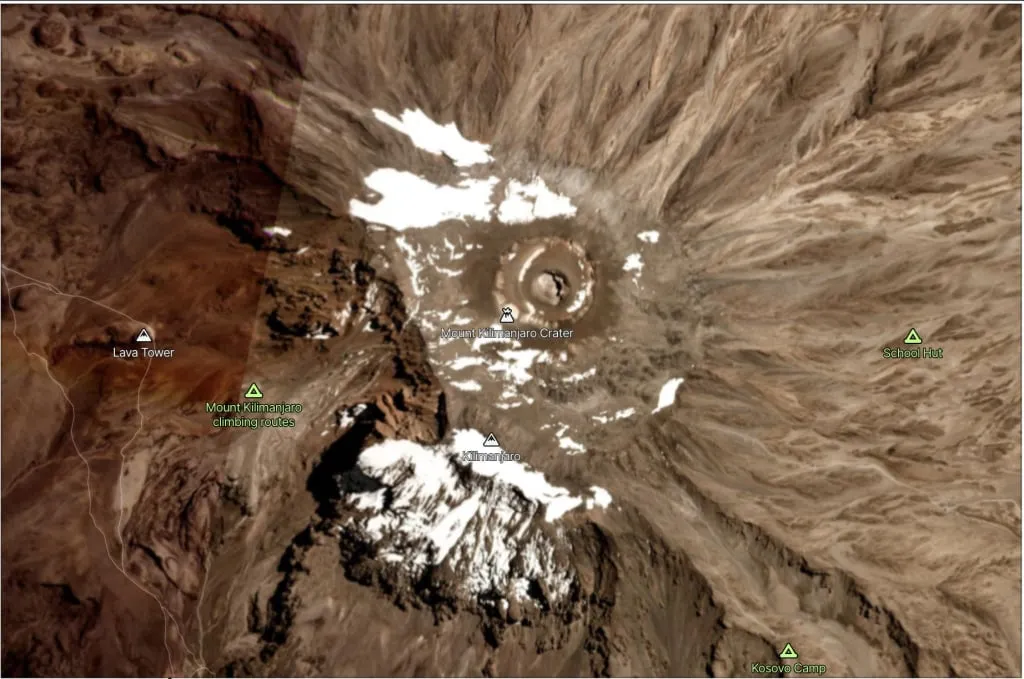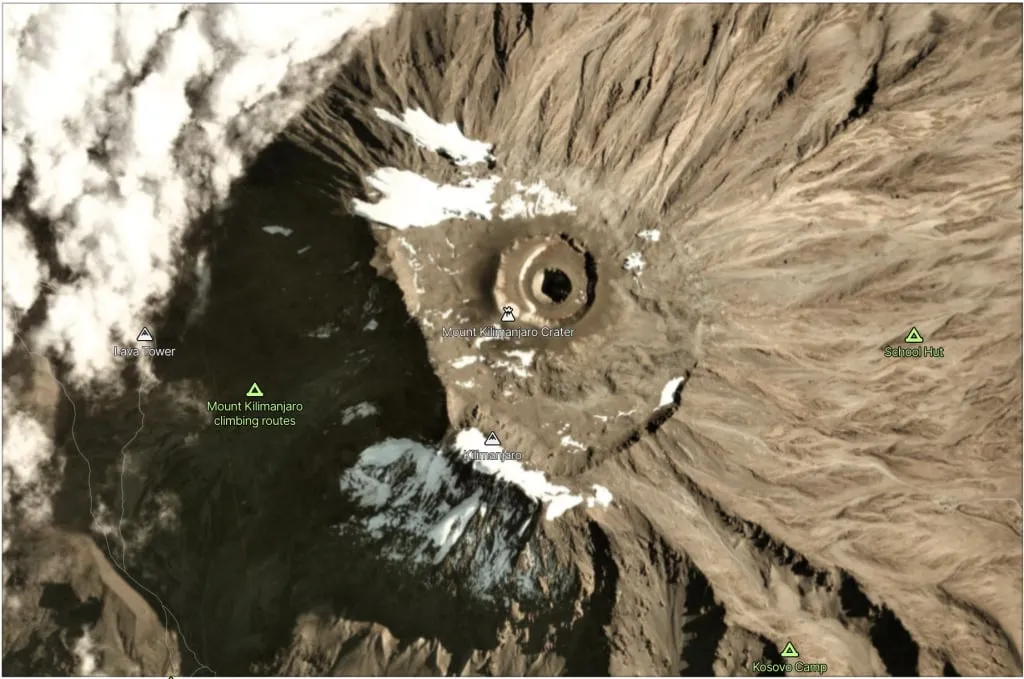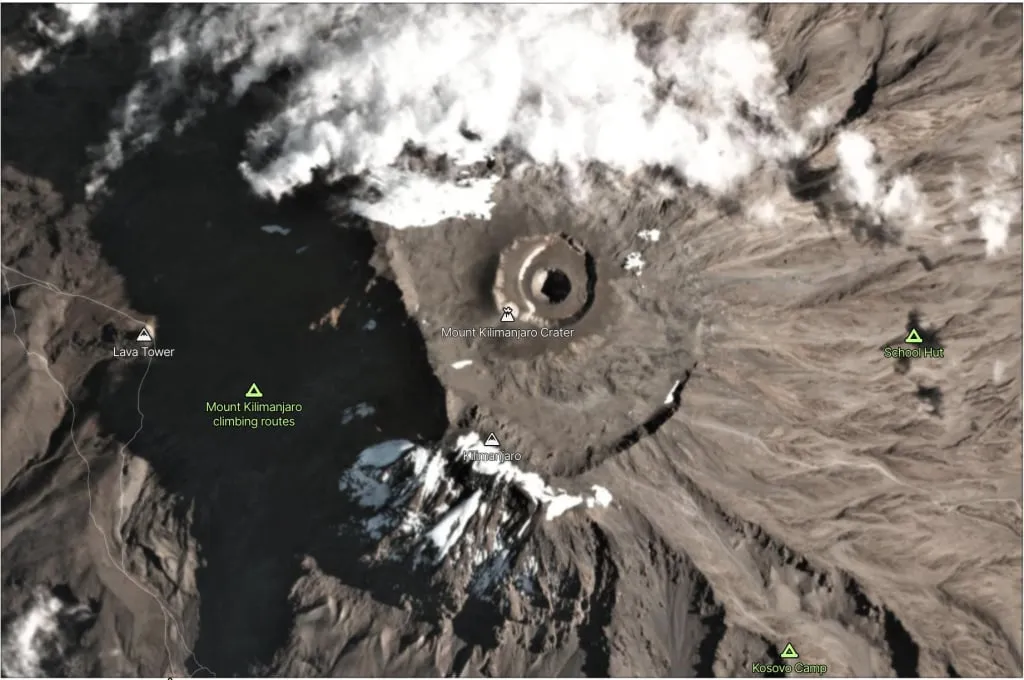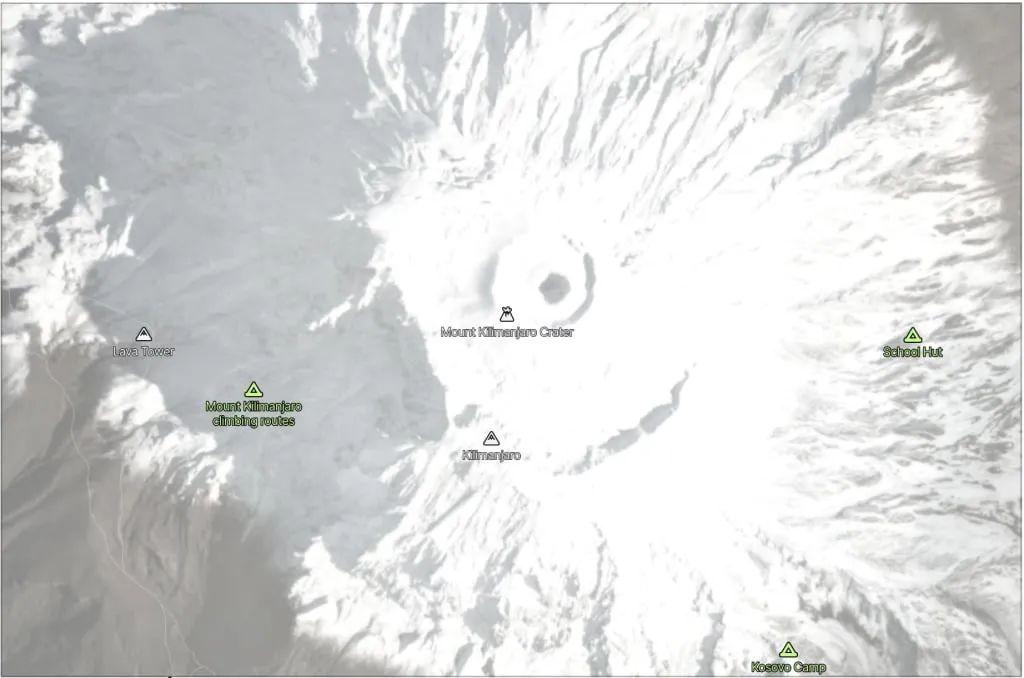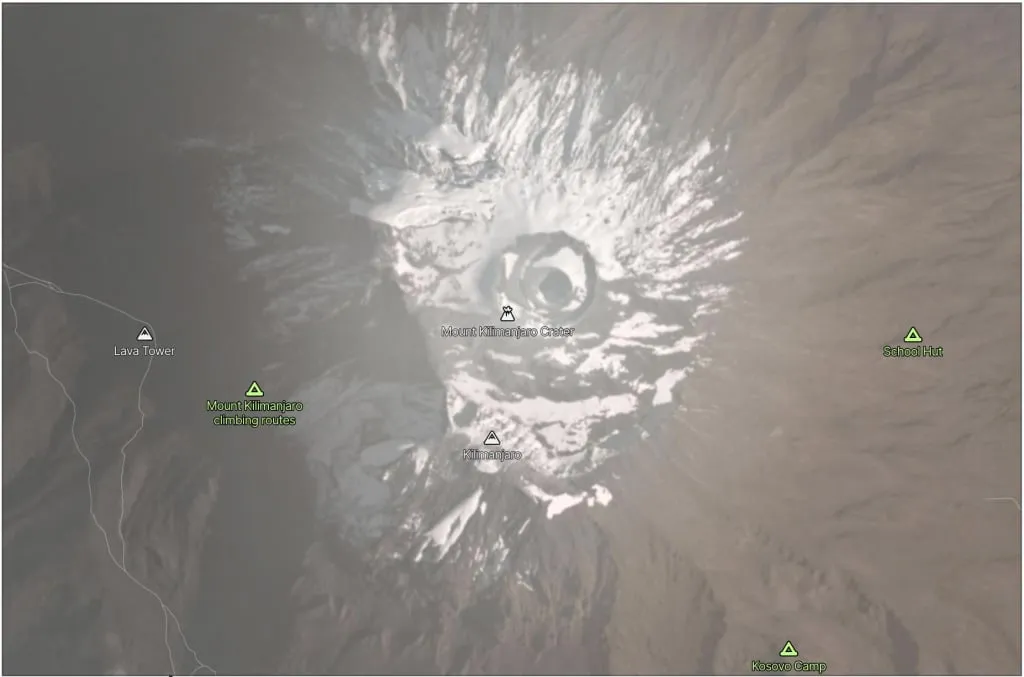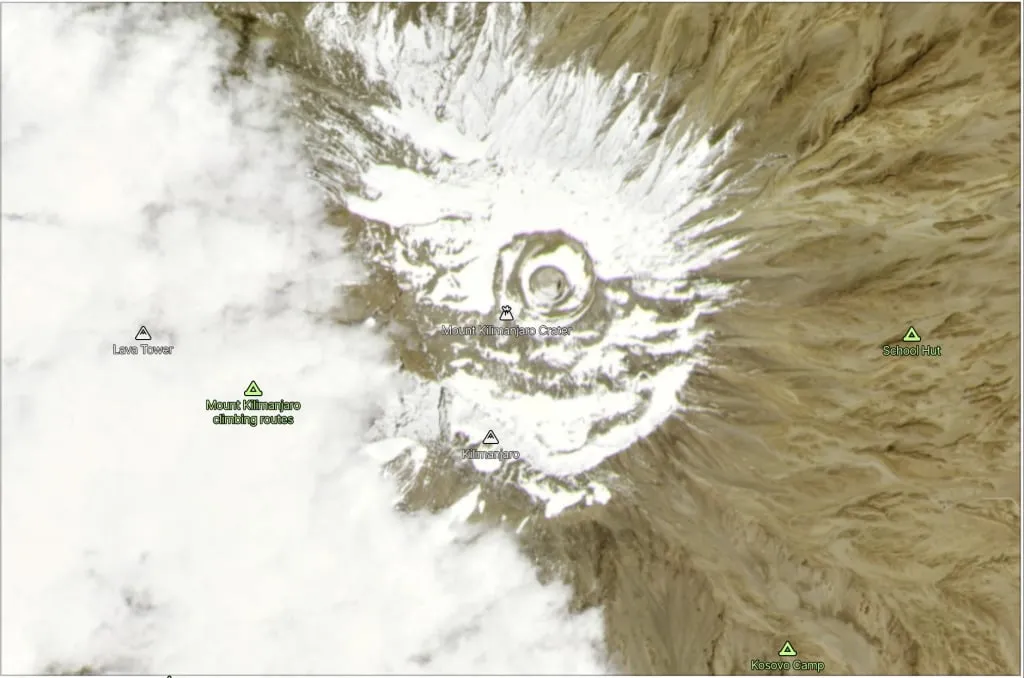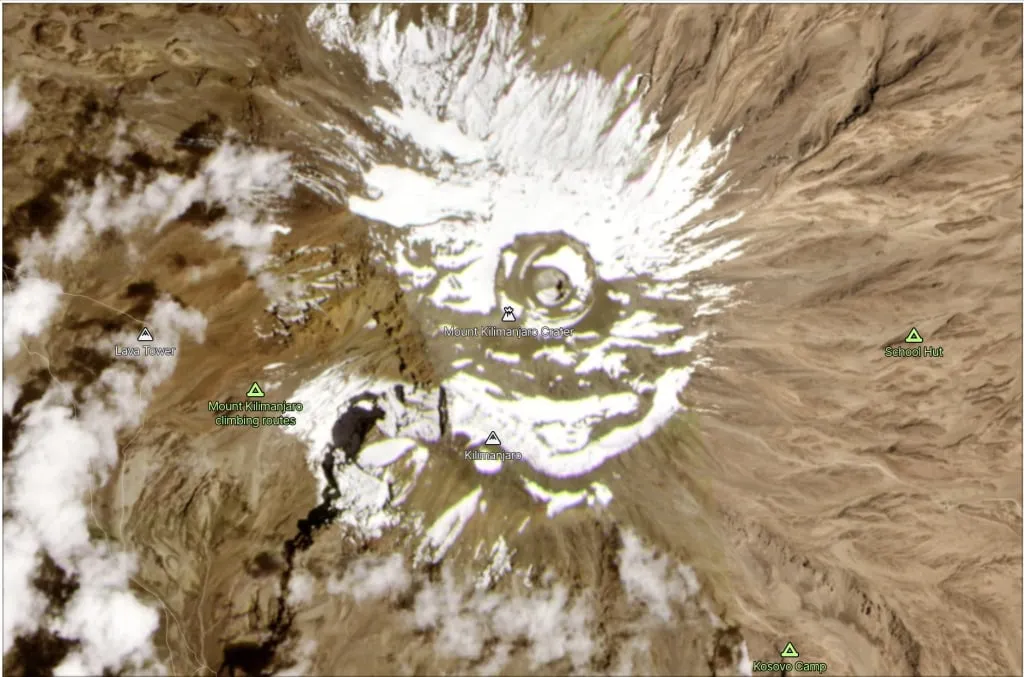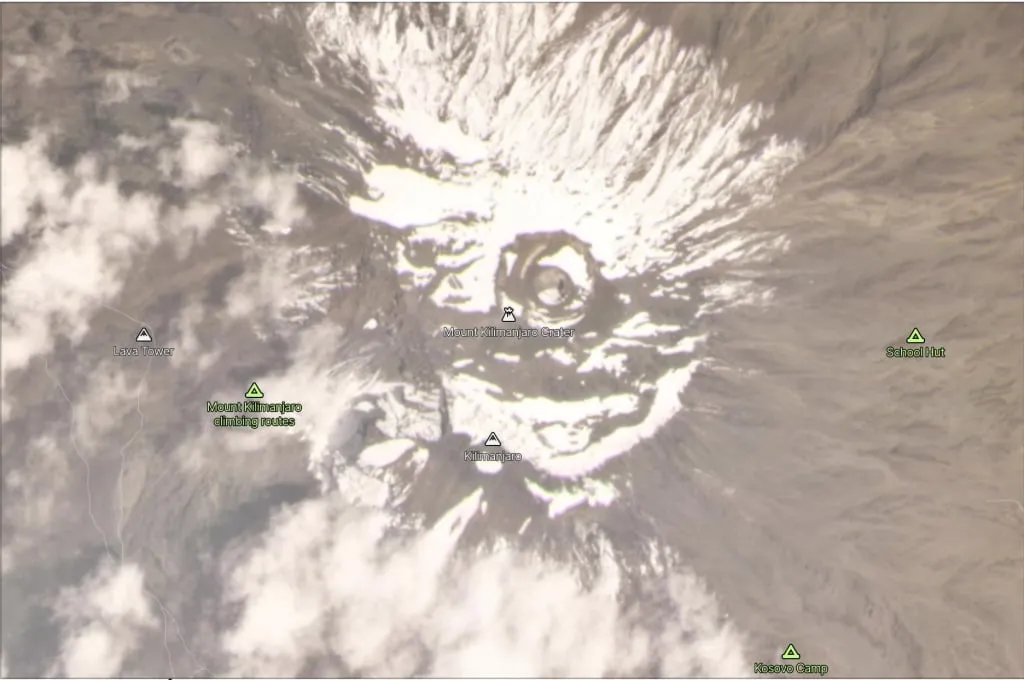What was 2021 like for the famous snowy cap of Mount Kilimanjaro? We decided to take a look at an entire calendar year and see what Kibo Peak (the highest point of Mt Kilimanjaro) was like from above day to day. A satellite that regularly photographs Africa's main peak helped us do just that. Below we will share our observations, conclusions, and pictures.
We are often asked about what time of year is the best for climbing Kilimanjaro. There are many factors, from the busyness of the routes in different months of the year to the weather conditions in the mountains. And the weather, in turn, is broken down into many components: temperature, cloudiness, amount of precipitation, humidity, wind, and presence of snow near the summit. All these conditions are related to each other and their interaction makes up the overall weather picture at high altitudes.
We decided to show you one calendar year in the life of Kibo - the main peak of Kilimanjaro with a recognizable crater. And in addition, we’ll talk a little about precipitation and what happens to the masses of snow and glaciers on Kilimanjaro.
You will see pictures of the peak taken by a satellite. The period of observation presented here is from December 2020 to February 2022. The entire 2021 year on the mountain is photographed month by month. All pictures were taken by a third-party commercial satellite, so the quality is not perfect and, on some images, the peak is "cropped". The dates are also different - we selected the best pictures. Very often, Kilimanjaro is shrouded in clouds as if wrapped in a giant scarf so that on many days the summit is simply not visible because of increased cloudiness.
Kilimanjaro through the “eyes” of the satellite
In the absence of snow, the glaciers on the top of Kilimanjaro are clearly visible. The ideal period to observe them, at least in 2021, is the period before the second rainy season, i.e. September-October when the old snow has already melted and the new snow has not yet fallen. Later we will see what it looks like from above.
There might be a lot of snow lying in November-December during the "cold" rainy season. But sometimes there may not be much snow cover at all, as you see in the December 2020 pictures. That's the unpredictability of Kilimanjaro weather.
The glaciers on Kilimanjaro are disappearing. We will use the word “disappearing” to avoid going into the complex scientific details of the processes behind it. It is not quite correct to talk about the “melting” of glaciers on Kilimanjaro, because melting involves the transformation of solid ice into water, which is possible at above-zero temperatures. However, at the peak, the temperature rarely rises above -3 °C (26.5 °F), so the process of melting there is rare and insignificant. It would be more correct to use the term sublimation, i.e. the transformation of ice immediately into steam, to describe the process of glacial shrinking. In general, the glaciers on Kilimanjaro are rapidly decreasing in size, and this is a fact.
Large amounts of snow can indicate not only recent precipitation on the mountain but also periods of low temperatures on the summit - it all depends on how long you observe the snow on Kibo. The length of time the snow cover remains is determined by the presence of favorable weather conditions. There is obviously a direct correlation between precipitation and the snowiness of the peak. But it is hard to predict how long the snow cap will last.
This is one of the most beautiful snow-covered vistas in 2021. There is so much snow that it reaches the famous Lava Tower and comes close to the School Hut Camp. To catch the summit of Kilimanjaro like this, especially on a sunny day, is a great luck.
Note that for almost the entire month of January 2021, the snow on the summit remained abundant. This is despite the fact that January-February is traditionally thought to be a warm, dry period, and many climbers do not expect to see snow on Kilimanjaro at this time. Such rare occasions become pleasant surprises, instantly adding extra picturesqueness to any expedition up the African peak that is captured in photos and memories.
We have talked about the seasons on Kilimanjaro. Many resources offer similar information based on years of scientific climate observations. But you have to keep in mind that there are no "ironclad" rules that accurately predict the weather and the snow situation on Kibo. Rainy seasons can shift, getting shorter or longer, and the rains can range from heavy to light.
Interestingly, in 2021 a large amount of snow covered the summit for almost half a year. The first two months were particularly snowy for Kibo.
But this applies mostly to the crater. For example, these photos show that the snow did not always reach Lava Tower.
The same is true of the School Hut camp on the other side of the crater. It is quite far away from the snow edge. Although a little over a month ago, on January 16, the snow was reaching both points. Looks like the snow cover was rather thin and did not last long.
In March, the area of snow cover decreased noticeably. Typically this time marks the end of the dry season on Kilimanjaro, and the period of warm rains begins. This is the closest it gets here to what we know as the season of autumn.
As a rule, from mid-March until the end of the month it begins to rain more and more frequently. This means that Africa's main peak will get more snow.
This is exactly what we saw in 2021. In the second half of March, Kilimanjaro received a lot of precipitation and the entire summit was covered with a snow cap. The photo taken on March 31 shows how picturesque Kibo can be.
April is considered the rainiest month of the year, and the year 2021 was no exception to this rule.
There was a lot of snow, and at one point it covered not only the Lava Tower but also the areas below. Just imagine what it was like to be there at that moment, especially since that period is considered the off-season, meaning there were few other climbers on Kilimanjaro. This snowy fairy tale could be a part of your Kilimanjaro experience. If you're lucky, you'll witness the rare sight of snow-covered African highlands, and take amazing pictures.
Look at how beautiful Mt. Kilimanjaro is in this photo taken on April 7. The sun is bright and the "crown of Africa" is shining proudly, sending greetings to the six highest mountain peaks on other continents. Looking at this photo, you can understand why the people of Africa called this volcano the "Shining Mountain" (which is the meaning of the word Kilimanjaro).
By the end of April, there is still a lot of snow on Kilimanjaro. Definitely a good year, and the expectations based on observations have converged with the reality of 2021.
In May, the snow zone is beginning to diminish. It's in the logic of seasonal change - rainfall intensity in the region is decreasing, and temperatures on the plains and in the foothills are slowly dropping. The summit of Kilimanjaro is becoming drier.
June is the month when the rains tend to end. African winter, the coldest period of the year, begins.
June 2021 saw little precipitation on Kilimanjaro, and the snow cover was rapidly diminishing.
As the last bits of snow disappear, the glaciers clearly show up on satellite images. They are best seen in the second half of the year.
In June-July, there are usually streams of tourists returning to the mountain routes of Kilimanjaro. And although this time is considered a long dry period, some rains are certainly possible. The result of that we see in the photo below - there is some snow on top of Kilimanjaro again. But it is unlikely to last.
August is the coldest month of the year. Nevertheless, there are many climbers during this period. The "dry" season continues, there is little snow on Kibo, and the glaciers reappear from under the snow.
As we said before, the glaciers are gradually shrinking. This is clearly visible in today's satellite photos. In old photos of the first half of the 20th century (when there was a lot of snow on Kibo) it is difficult to distinguish ice formations. But nowadays when there is much less snow, we can trace the changes of each individual glacier.
The gradual decline of glaciers is related to their shape. Those are tall vertical walls of ice, which means that snow cannot cover the sides of the glacier, even when it falls abundantly at the top. It is snow that is the main protector of ice. While it is able to cover the glacier from above, the sheer walls remain unprotected, and gradually fragmenting, they collapse. The dry air that persists during prolonged periods without precipitation also contributes to the shrinkage of the glaciers. To the east, where the summit is most often uncovered by clouds, the glaciers are "undermined" by the sun.
Snow could preserve the glaciers by shielding them from all types of radiation and dampening the air around them. It does a good job of protecting the surface layer of ice from sublimation. What matters is not the amount of snowfall at one time, but the frequency of snowfall. The more often the snow falls, the cleaner and brighter it is, which means it reflects more sunlight, preventing the air from drying out.
But the long snowless periods open up Kilimanjaro's glaciers to the elements that gradually destroy them.
As paradoxical as it may sound, global warming could save the glaciers of Kilimanjaro from extinction. This is possible in two stages: first, direct solar heat and infrared radiation may change the shape of glaciers by polishing their sharp edges from above. Then, when the slopes of glaciers become flatter, the accelerating atmospheric circulation in the Indian Ocean may bring precipitation in the form of snow to Kibo more often, covering the glaciers that have become flatter. In this case, it might be possible to slow down the decrease of glaciers and even increase them. However, this is just a theory.
In practice, however, so far we have only seen a decrease in the size of glaciers on Kilimanjaro from year to year.
But every time we see the snow cover expand it causes a great deal of joy. As in the photos taken in late November and December 2021.
The second rainy season is in November. Look at the effect of the heavy rainfall in late November 2021.
The snow may melt quickly, but if precipitation is frequent, the snow cover will last longer on Kibo.
Which is what happened in late 2021 and early 2022. Take a look at the New Year's gift the weather on Kilimanjaro has given to all climbers.
This was the year 2021 on the “roof of Africa”. Finally, let's see what the beginning of 2022 was like.
This was not an exceptional year, but rather an ordinary year, with average figures. We cannot draw conclusions about every calendar year from it, much less make predictions. The year 2021 confirmed the seasonality of the rains for this region and demonstrated a direct correlation between the amount of precipitation and the size of the snow cover in and around the Kilimanjaro crater.
And to see Kilimanjaro's snow with your own eyes, plan your expedition to the summit! We will be happy to help you with all organizational questions.
All content on Altezza Travel is created with expert insights and thorough research, in line with our Editorial Policy.
Want to know more about Tanzania adventures?
Get in touch with our team! We've explored all the top destinations across Tanzania. Our Kilimanjaro-based adventure consultants are ready to share tips and help you plan your unforgettable journey.















